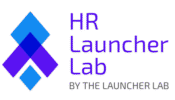If you’re scaling a SaaS platform, growing an E-commerce operation, or expanding a HealthTech solution, chances are you’ve embraced hybrid work—and with it, hybrid hiring. This isn’t a passing experiment anymore. It’s a strategic reality for tech-driven companies operating in fast-moving, competitive markets. But here’s the problem: when hybrid hiring is handled poorly, you can sabotage collaboration before the new hire even accepts the offer.
In industries that rely on rapid iteration, agile sprints, and constant cross-functional interaction, collaboration isn’t just nice to have—it’s a business necessity. In hybrid environments, where teams are split between offices and remote workspaces, traditional hiring processes simply don’t capture what’s needed for successful teamwork. Without intentional design, cracks appear early, and those cracks can widen into culture gaps, bottlenecks, and costly turnover.
This guide is for founders, HR leaders, and executives running teams of 50+ employees in sectors like SaaS, HealthTech, EdTech, and PropTech. You’ll learn the most common hybrid hiring mistakes that undermine team cohesion, why they matter, and how to prevent them with AI-powered hiring tools, better interview structures, and onboarding that’s built for collaboration from the start.
Hybrid Hiring vs. Traditional Hiring: Why It Requires a New Approach
Hybrid hiring is more than just remote interviews followed by in-office paperwork. It’s a fundamentally different operating model that blends sourcing, evaluating, and onboarding talent across digital and physical spaces. Instead of relying on chance encounters in the office to transmit culture and build trust, you have to design collaboration into the process itself.
For scaling companies, hybrid hiring means:
- Integrating new hires into distributed teams that may span several time zones.
- Building collaboration intentionally, not assuming it will happen naturally.
- Replacing “culture by proximity” with deliberate, visible cultural cues in the hiring process.
Mistake 1: Hiring for Skills Alone Without Collaboration Assessment
Fast-growing tech teams often over-index on hard skills—hiring the best engineer, analyst, or designer they can find—without asking whether that person can thrive in a hybrid team setting. In distributed work, collaboration skills are just as critical as technical ability.
What this looks like in practice:
- A talented backend engineer struggles to provide clear asynchronous updates, slowing development.
- A skilled data scientist fails to bring stakeholders into the loop until late in a project.
- A creative lead produces great designs that miss key business objectives because cross-functional communication was weak.
What to do instead:
- Add behavioral and collaboration-focused assessments to your hiring toolkit.
- Simulate hybrid work scenarios in the interview process to see how candidates handle feedback, async updates, and cross-team communication.
- Train interviewers to ask targeted questions like, “How do you ensure visibility on your work in remote environments?”
AI-powered tools can now predict collaboration fit based on scenario testing, making it easier to assess teamwork potential before extending an offer.
Mistake 2: Siloed Interview Processes Across Departments
Involving multiple teams in interviews is smart—until each one operates in isolation. If engineering, design, and product don’t coordinate during the hiring process, candidates get mixed messages, redundant questions, and conflicting expectations.
Signs this is happening:
- Feedback from different interviewers contradicts itself.
- Candidates are asked the same questions in multiple rounds.
- Key expectations about collaboration or decision-making aren’t aligned before hiring.
Fix it with:
- A shared, AI-enhanced interview scorecard that tracks technical skills, cultural fit, and collaboration readiness across all stages.
- Short, structured debrief sessions where hiring managers align before making an offer.
- Collaborative hiring platforms like Lever or Greenhouse to centralize feedback and avoid duplication.
Mistake 3: Treating Onboarding as a Checklist, Not a Collaborative Experience
In hybrid teams, onboarding can’t just be “log into your email, meet your manager, start work.” Without structured onboarding that builds relationships and cross-functional visibility, new hires remain disconnected.
Common failures:
- Dropping new hires into meetings without context.
- No exposure to tools and rituals that define team collaboration.
- Assuming integration will “just happen” over Zoom.
Better approach:
- Design a 30–60–90 day onboarding plan with built-in collaboration touchpoints.
- Use AI to generate personalized onboarding introductions and suggest connections based on upcoming project dependencies.
- Pair each hire with both a functional mentor and a “collaboration buddy” who helps them navigate cross-team workflows.
Mistake 4: Ignoring Digital Fluency in Candidate Evaluation
If your team collaborates in tools like Slack, Notion, Figma, or Jira, every hire needs more than basic tech comfort—they need digital fluency. This means understanding how to communicate clearly, share updates asynchronously, and give feedback without live meetings.
How to evaluate this:
- Ask candidates to complete a task in your core collaboration tools and submit results asynchronously.
- Include scenario-based questions about handling feedback or updates in distributed teams.
- Use AI to review written or recorded responses for clarity, tone, and engagement.
Mistake 5: Overlooking Time Zone Realities
Global hiring expands the talent pool but can create collaboration dead zones when there’s no overlap in working hours. Without planning for time zone compatibility, projects stall and team cohesion suffers.
How to avoid it:
- Define “core collaboration hours” that all team members can attend.
- Be explicit about time zone requirements in job postings.
- Use AI to summarize async updates so no one misses critical decisions overnight.
Mistake 6: Not Translating Culture into Digital Signals
Hybrid teams can’t rely on office energy to transmit culture. If you don’t deliberately showcase cultural norms during hiring, new hires won’t know how decisions are made, feedback is given, or priorities shift.
Tactics:
- Share short recordings of real team discussions and decision-making sessions.
- Include values-based scenarios in the hiring process.
- Give candidates access to your “collaboration playbook” before they start.
Mistake 7: Treating Hybrid Hiring as a Static Process
In scaling businesses, roles evolve quickly. If your hybrid hiring process isn’t reviewed and adjusted regularly, you’ll keep hiring for outdated needs.
How to keep it adaptive:
- Audit your hiring process quarterly to track collaboration outcomes.
- Use AI sentiment analysis on team communication channels to detect early friction after onboarding.
- Gather structured feedback from new hires at Day 7, Day 30, and Day 60 to identify improvement opportunities.
Conclusion
Hybrid hiring, when done right, is a growth accelerator. When done wrong, it’s a collaboration killer. In high-growth SaaS, E-commerce, and HealthTech companies, success depends on integrating people who can thrive in distributed, fast-moving environments. By assessing collaboration from the start, aligning interview processes, onboarding for teamwork, and adapting hiring workflows continuously, you can make hybrid hiring a competitive advantage instead of a liability.
Hire Smarter. Grow Faster.
Expert tools, templates, and vendor picks to attract and onboard top talent—fast.
- Detailed, step-by-step hiring guides
- Ready-to-use recruiting templates
- Vendor picks for ATS, job boards, background checks & more
FAQ
What is hybrid hiring? It’s the process of sourcing, interviewing, and onboarding candidates across both virtual and physical settings.
Why does collaboration fail in hybrid teams? Lack of alignment, missing digital fluency, and poor onboarding are common culprits.
Should collaboration skills outweigh technical skills? They should be equal priorities in hybrid environments.
How can AI improve hybrid hiring? AI can assess communication style, predict collaboration fit, centralize interview feedback, and track early engagement patterns post-hire.
How often should we adjust our hybrid hiring process? At least quarterly, aligned with business changes and team structure shifts.
Disclaimer
The information on this site is meant for general informational purposes only and should not be considered legal advice. Employment laws and requirements differ by location and industry, so it’s essential to consult a licensed attorney to ensure your business complies with relevant regulations. No visitor should take or avoid action based solely on the content provided here. Always seek legal advice specific to your situation. While we strive to keep our information up to date, we make no guarantees about its accuracy or completeness.
This content may contain affiliate links, meaning we receive a commission if you decide to make a purchase through our links, at no cost to you.
For more details, refer to our Terms and Conditions.

